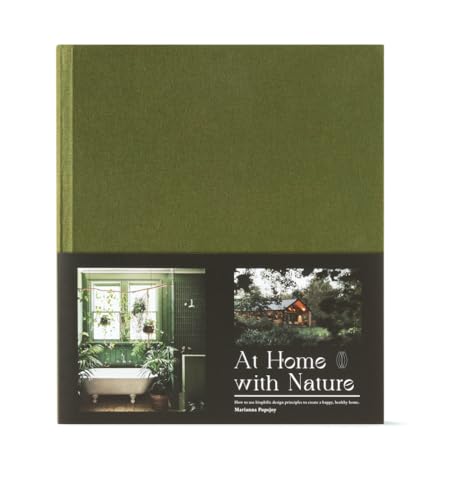I'm a Biophilic Designer, and These Are the 10 Ways I Bring Its Ideas Into a Kitchen Design
Kitchens often have an inherent connection with nature, but it's something that you can play up even more with the right touch of biophilia

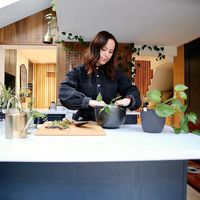
If I had a dime for every time I heard someone associate the idea of organic interiors with being brown and boring, then I’d never have to design another kitchen again. As a biophilic designer whose work is 90% made up of kitchen designs, I’d have a lot more spare time on my hands.
Firstly, let me debunk the idea that biophilic kitchen ideas equal people wafting around their beige homes, barefoot, in washed-out linen, while making their own sourdough starter. They can be that. Sure. But they can also be a riot of color and pattern if that’s what floats your kaftan. We’re all beautifully unique, and there is an abundance of inspiration out in nature to suit all of our tastes, so what better place to start than in the heart of the home? The kitchen is a space where we lovingly prepare the food that nourishes ourselves and our friends and family. Most of us know by now that it’s beneficial to fuel our bodies with high-quality organic ingredients, so why wouldn’t we apply the same care to the kitchens that we spend so much time in?
Kitchens are a financial commitment. They are perhaps the room that you will invest the most money into if you’re a homeowner, so you need to ensure that the design decisions you make in there are timeless and true to the core elements in nature that you love and are drawn to time and time again. If you’re renting and a little bit limited in what you are allowed to change within your Ts&Cs, don’t worry; there are plenty of cost-effective additions you can bring into the space you have inherited that will make it feel more connected to the great outdoors - and you’ll be able to take them with you when you move out in order to breathe life into your next space. Here are my top 10 tips for bringing biophilic interior design into your kitchen.
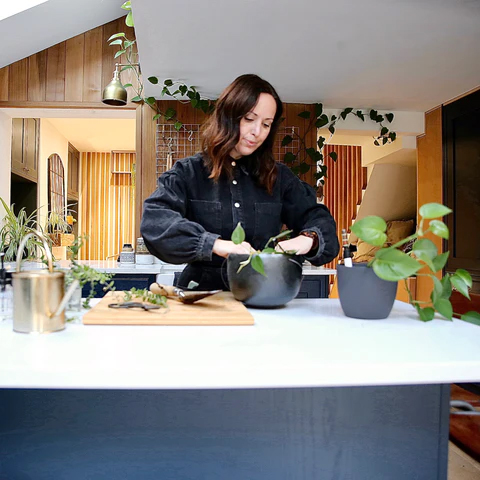
Marianna Popejoy is an interior designer specializing in biophilic design. She’s worked on numerous projects from outdoor bathrooms and garden layouts, to jungle-inspired interiors. Her work and home have been featured globally by Architectural Digest and Apartment Therapy, and her recently published book At Home with Nature is aimed at helping people make realistic, achievable changes to their homes by incorporating elements from nature.
1. Natural Light
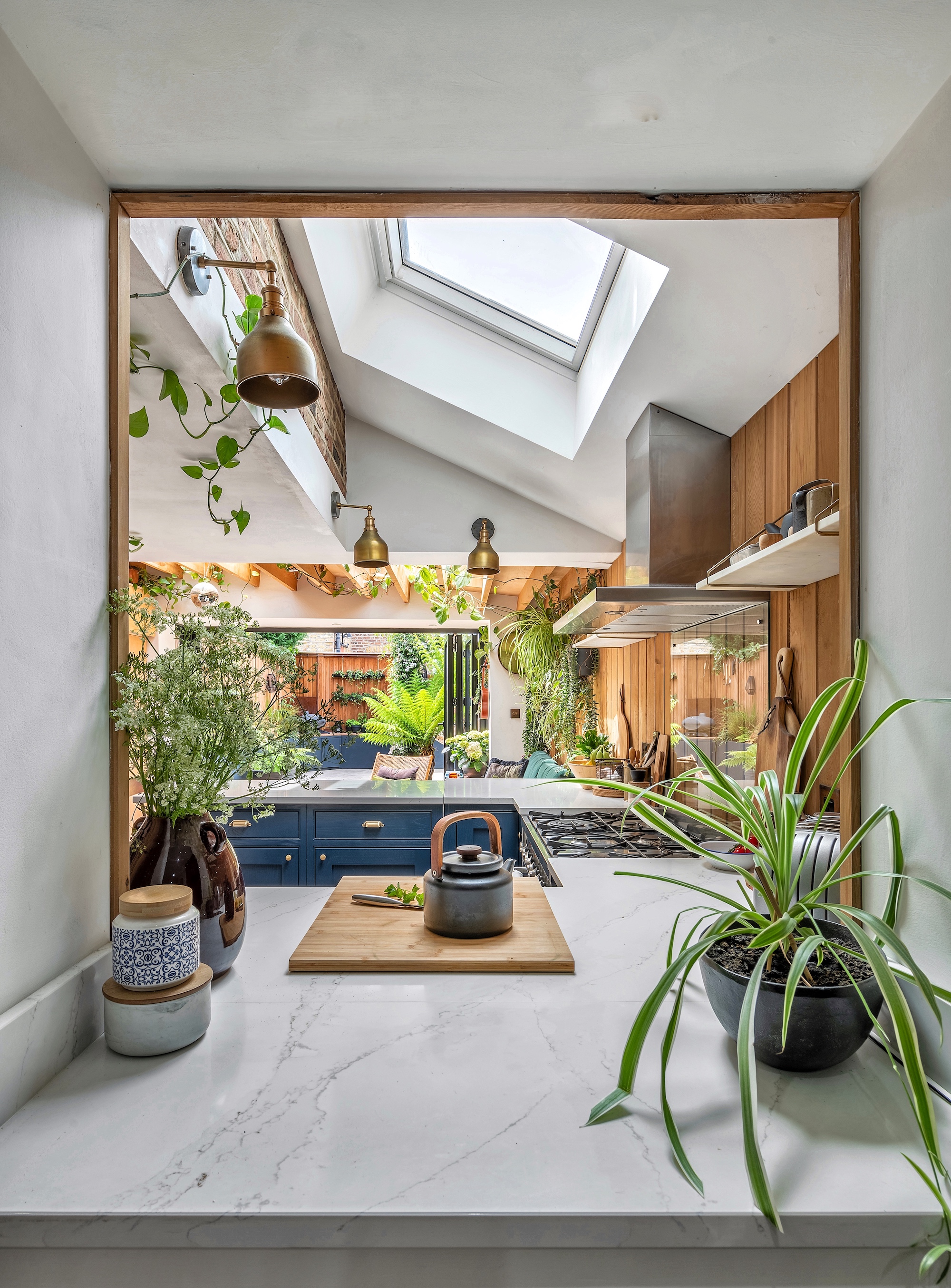
I tried to break the habit of a lifetime and not put natural light as my number one tip in an article about biophilic design. I really did. But the importance of embracing natural light and what to do when it is limited or non-existent in the design of all rooms, everywhere, really does outweigh any fear that I might have about being accused of being a one-trick pony. And that goes double when we're talking about biophilic kitchens.
I’ll say it louder for the people at the back: while planning a kitchen refit or extension, consider maximizing your natural light at the very beginning of the process with the introduction of glazing, such as with kitchen extensions with skylights or clerestory windows that encourage the flow of daylight without compromising your privacy in the process, but what can you do if those design decisions are out of your control?
Kitchens are a hub of activity, which can lead us to believe that we need stuff immediately on countertops and windowsills even when they are not in use. Avoid cluttering windowsills with too many items, even plants, yes — I went there. Cluttering your windowsills is a surefire way to block light. Keep them clear of busy kitchen window treatments and hang your blinds above the recess if there is space. Instead of solid wall cabinets, consider open shelving to allow light to travel more freely. I know the pretty pantry is all over your Pinterest inspo board, but step away from the tall, bulky cabinet, unless you have been blessed with a lovely light and airy space, as they can cast shadows and impede the flow of light around the room.
Shining a light on our morning ritual is something that we can all aspire to. In an ideal world, checking our phones would not be the first thing that we do when we open our eyes in the morning. We would open our blinds and let the natural light pour in to boost the serotonin levels in our brain — our "feel-good" hormone associated with feelings of happiness, calmness, focus, and well-being. Imagine a world where we combined the natural high from sunlight with our favourite morning tipple. Positioning your kettle, smoothie, or coffee maker next to the window as opposed to facing a wall will ensure that part of your self-care morning ritual is bathed in enough natural light to put a spring in your step for the rest of the day.
The Livingetc newsletters are your inside source for what’s shaping interiors now - and what’s next. Discover trend forecasts, smart style ideas, and curated shopping inspiration that brings design to life. Subscribe today and stay ahead of the curve.
And if space in your kitchen isn’t permitting, you could create a spot close by where you can sit and enjoy your beverage, lit to perfection.
2. Functionality
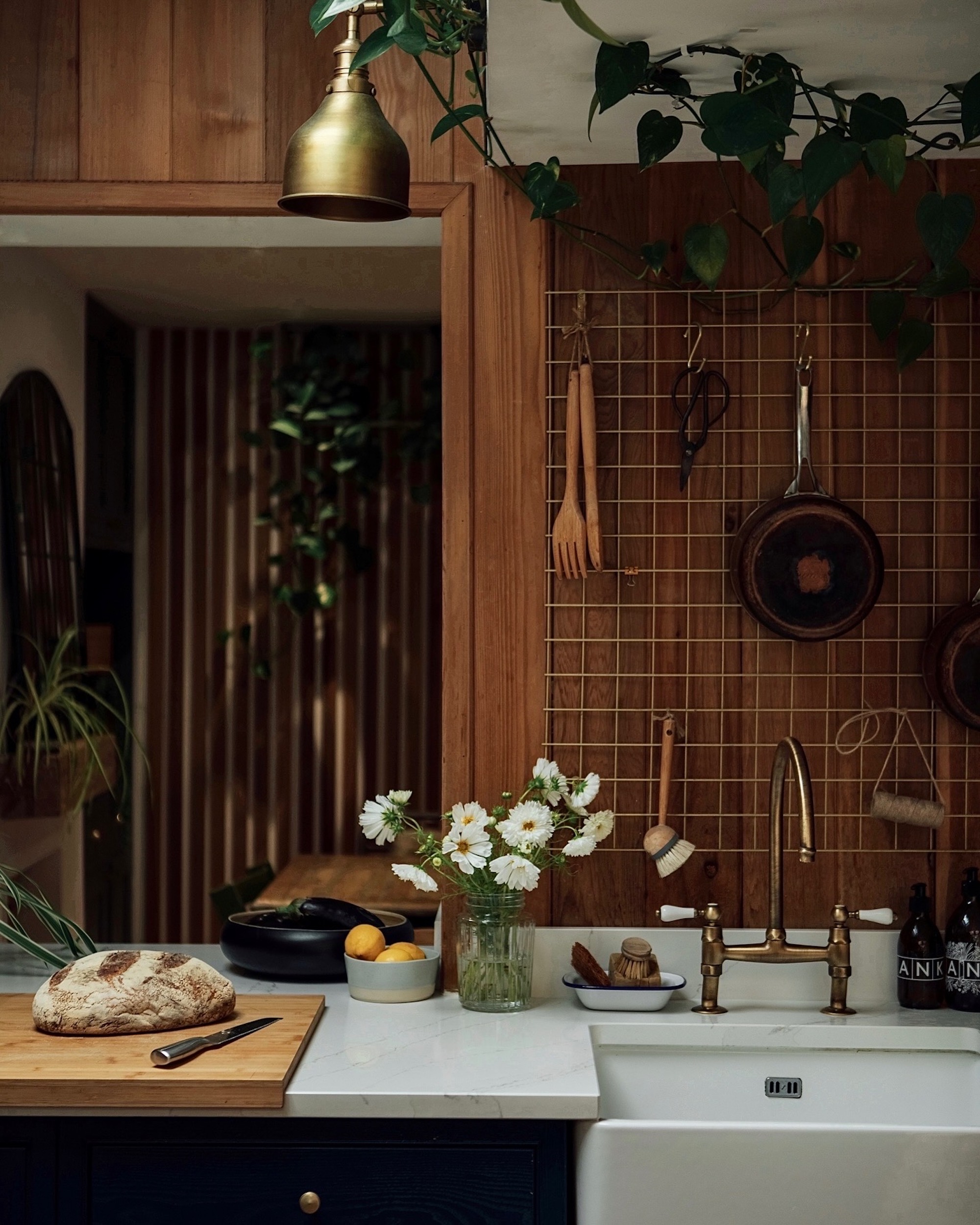
Practically. It’s not a sexy word, I grant you. I promise to move to the more fun bits of biophilic kitchen design soon, but getting the fundamentals right, from the very beginning, is the key to a successful kitchen design that is not only beautiful but functional too. Let's aspire to live in a world where kitchens do not have to hang their heads in shame because a builder thought the five-by-four meter space needed twelve spotlights in a grid format that did nothing but cast annoying shadows while you chop your carrots.
Ask yourself, what tasks do you want to do in the kitchen and where? Can you add in some strip lighting under shelving to make meal prep less hazardous, for example? Maybe add a cosy countertop lamp or battery-operated wall lights to add some much-needed ambiance to dinner parties where mood lighting or overhead pendants have been overlooked?
Biophilic kitchen design doesn't just focus on the mere aesthetics; it is also a powerful tool for enhancing human experience within the built environment. We’ve all heard of the kitchen triangle, sometimes referred to as the work triangle. A concept that refers to the imaginary lines connecting the three primary work areas in a kitchen: the sink, the oven, and the fridge.
Although in recent years it's increasingly considered outdated by interior designers as the guiding principle for modern kitchen design, the process of moving easily between appliances should be paramount in any design.
It seems obvious, but something as simple as putting the cooking oil in a nice bottle next to the cooker, along with your pots and pans in the neighbouring cupboard, or hanging your favourite mugs on a rail above your kettle will make the day-to-day activity within the space flow so much better, creating a more harmonious and calming environment in the process.
3. Materiality
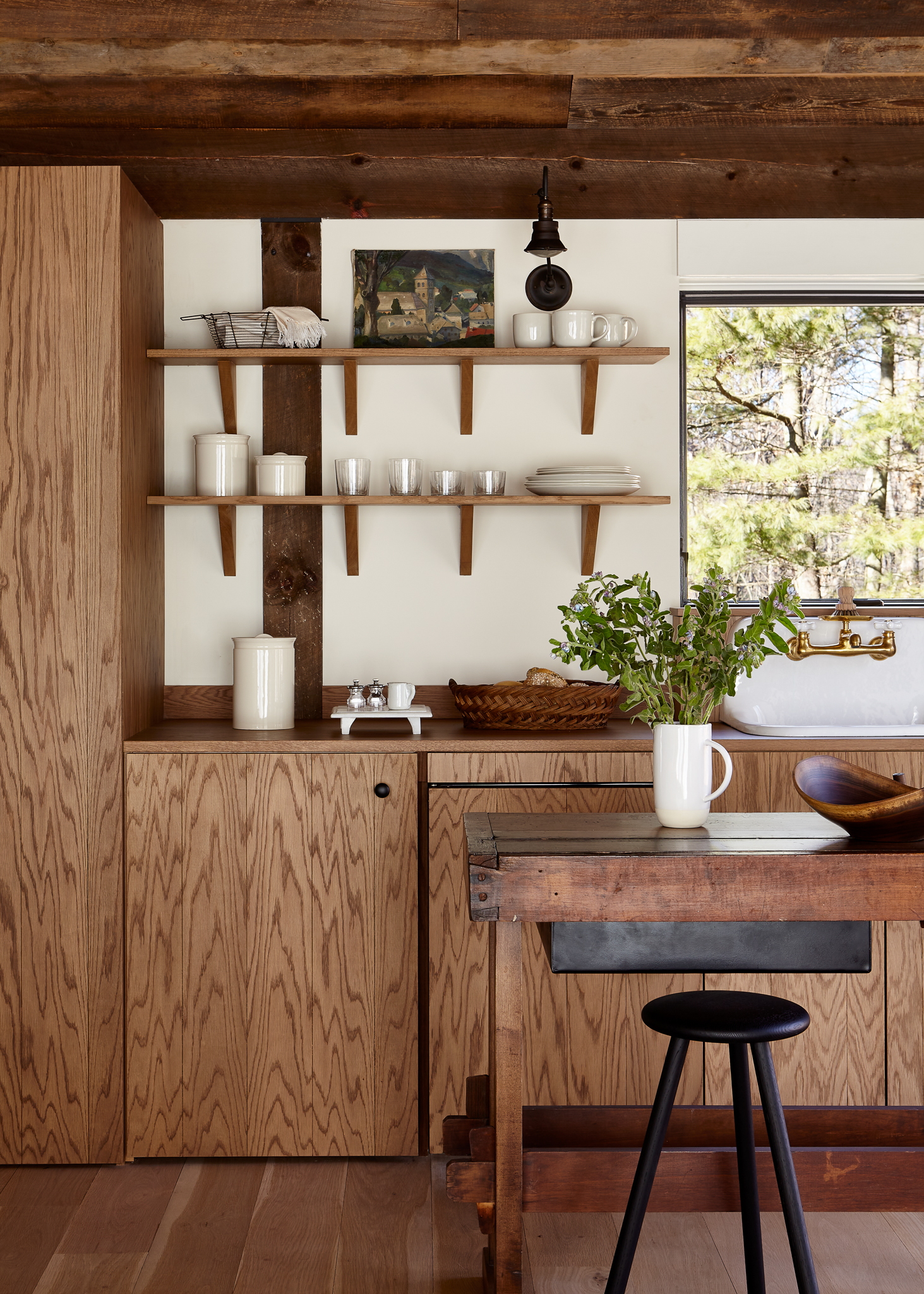
In the words of Madonna, ‘I am a material girl.’ Give me a tray and some samples, and I will happily put together pleasing combinations all day long. And what do you think will tie together every one of those material mood boards? You guessed it. Natural materials. I’m a sucker for them. Using natural materials in kitchen design is so important because it immediately taps into our innate human connection with the natural world.
Almost every kitchen brief that I have had the pleasure to receive as a biophilic kitchen designer in the last twelve months has included a natural timber kitchen. Unfortunately, because of the rising costs of timber in recent years, you need to have a very healthy budget to keep a wood kitchen in the plan. As much as I hate to bring up the dreaded c-word (compromise) this early in our relationship, I feel that I must, as there are plenty of ways to bring in the warm, inviting tones of timber to your kitchen without selling a kidney.
It has been proven that humans find the tactile qualities of wood soothing and grounding, with some studies even showing a reduction in our heart rate when we’re in direct contact with timber. Try introducing wooden touch points, such as cabinet handles or an oversized statement chopping board. You might not be able to justify ripping out a perfectly good kitchen in place for a timber one, but maybe the introduction of a waney edge oak shelf or a tongue-and-groove splashback can achieve a similar feel for less.
And don’t forget what’s underfoot. Of course, natural materials such as stone, timber, or cork flooring are the biophilic dream, but if you only have veneer or lino on the menu, a sisal rug can cover a multitude of sins in those high-traffic areas. Just make sure it’s set back from the spill zones, such as the cooking and washing-up areas.
4. Color
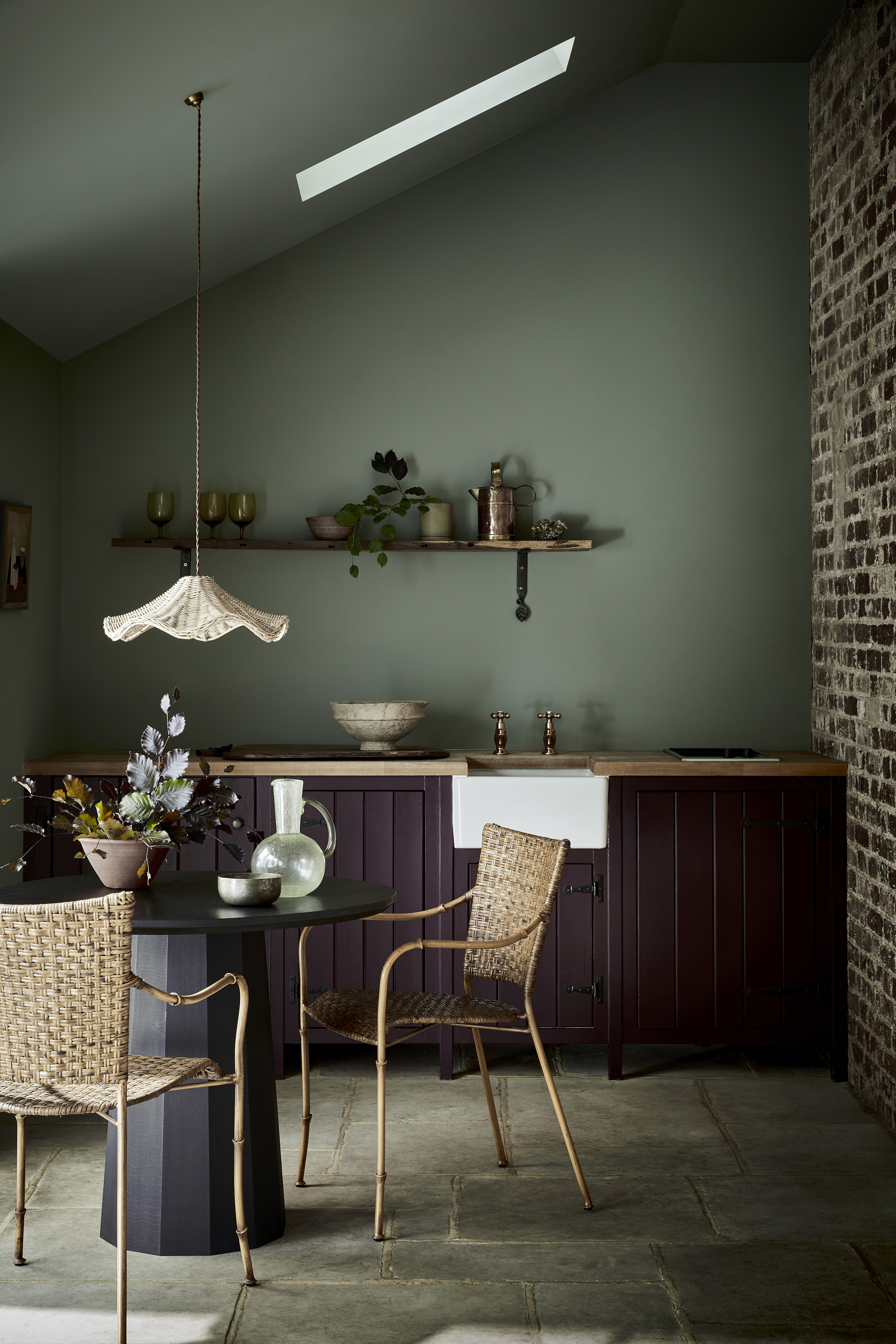
You can find an example of every single color on the spectrum out in nature if you look hard enough. That’s why not all biophilic kitchens need to be green or some other earthy shade to be invited to the party. What colors in nature are you naturally drawn to? Chances are the clues lie in your wardrobe.
When you open your closet doors, are you bowled over by autumn shades or is it a cacophony of brights and stripes? You’ll find the clues hiding within the items most unworn, too. I have a vibrant blood orange cardi that I love. I get compliments every time I wear it, which is very seldom because I am a true autumn and therefore more often than not will pick it up and put it straight back into the closet from whence it came. It just doesn’t feel like me. Our interiors are much the same.
Nothing can be more divisive than the announcement of the Color of the Year by the various big paint manufacturers. Proof that one woman's buttercup yellow is another woman’s Mr Tumble’s trousers. So instead of being led by trends, think about the colors out in nature that make you feel the most inspired or calming to be around. There is a reason why greens and blues are consistently the most popular colors in kitchen design. They are both dominant colors in the natural world, reflected in the vast expanse of the sky and oceans and, of course, the lushness of our landscapes, forests, and foliage.
Whether you're drawn to an earthy aubergine palette or a fresh sky blue, the vibrancy of the hue is a great way of turning up or down the energy within the color, too. Do you want your kitchen colors to create an uplifting space or a calming one? Once you have asked yourself that question, you can collect some samples and have a play around on the various walls and cupboards within the space. There are lots of angles within a kitchen to consider, along with whether your room is north or south-facing. These factors can really impact paint colors, so it’s important to take your time to avoid costly mistakes. Try dipping your toe into the water by bringing in color through crockery or appliances in those instances where changing paint colors or tiles is not an option.
5. Natural Motifs
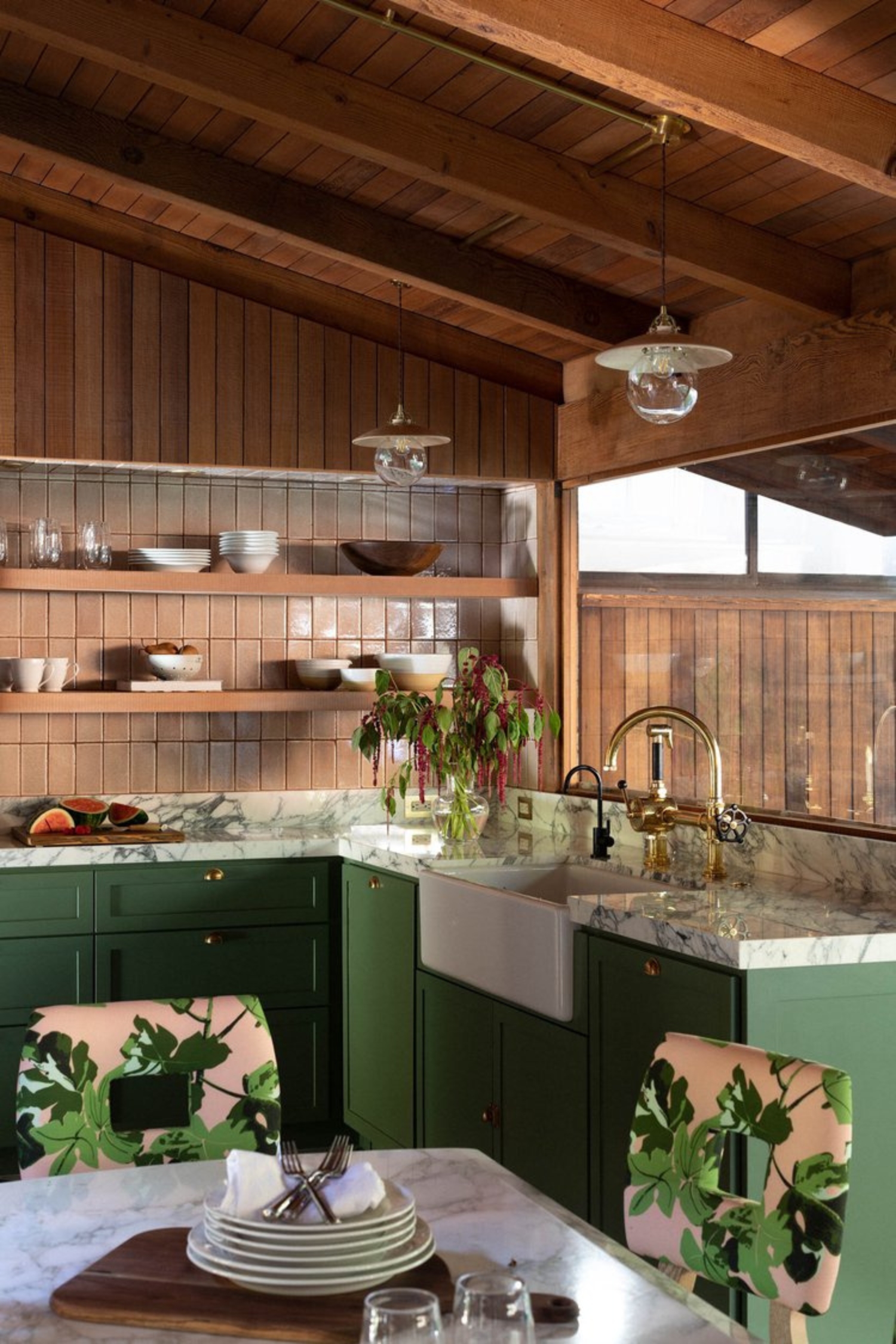
Exposure to natural motifs has been consistently linked to reduced stress levels, increased focus, and enhanced creativity due to their direct connection to the patterns, shapes, textures, and processes found in the natural world, so why wouldn’t you want a healthy dash of that with your morning matcha? Luckily for us, the days of dictatorship around not having kitchen wallpaper have long since fallen out of favour, and I think we should celebrate and paint the town floral — if that’s your vibe. From heritage-style motifs from the likes of Sanderson that transport you to an English country garden to the more contemporary designs by House of Hackney, there is a paper out there for all tastes and budgets. And some of them are even peel-and-stick, so fully renter-friendly.
If you’re feeling like throwing caution to the wind, you could consider adding a patterned fabric with a natural motif to your dining chair to add an element of the unexpected.
Ever since seeing the upholstered dining chairs in Jaqui Seerman’s ‘Fryman Canyon’ project, pictured above, I have not been able to get them out of my head. If you’re looking for a masterclass in biophilic kitchen design, I would suggest starting there. There aren’t enough ticks in the land to cover all of the boxes she thoughtfully considered in this design. It’s aspirational for sure, but if you’re not fully convinced that natural motifs are for you and you’re worried you will tire of a busy pattern, you could try framing a small piece of wallpaper or fabric and living with it for a while before taking the plunge.
6. Connection
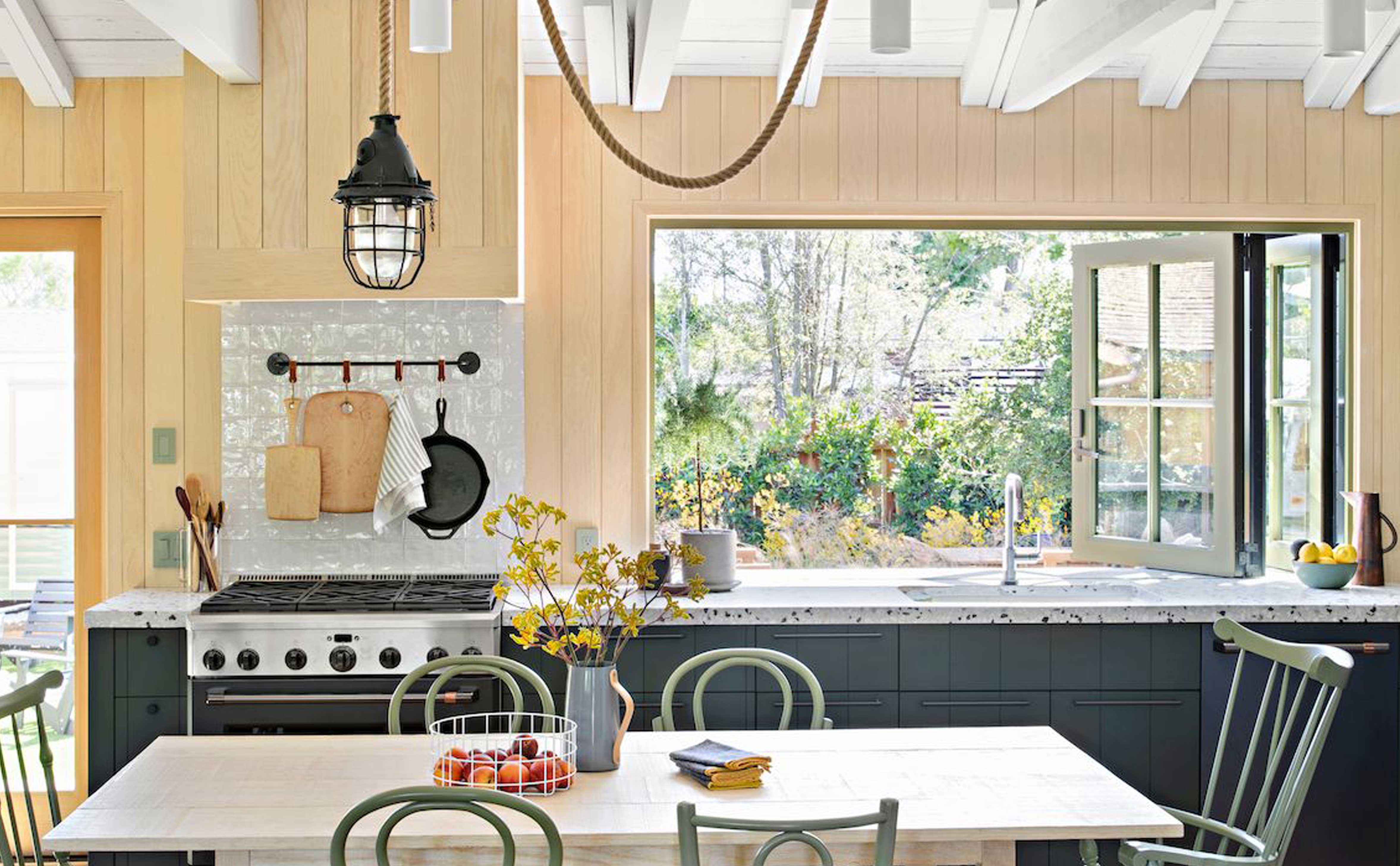
What can you see outside of your kitchen window? Is the view a positive one? If you answered yes, then this next step is going to be much more straightforward, as direct visual and physical access to the outdoors provides a powerful and immediate feeling of connection to the natural world.
Views of nature and access to outdoor spaces have been consistently linked to reduced stress, anxiety, and mental fatigue. Even just a glimpse of greenery can have a calming effect on us. Think about what you place where and the outlook that it will have. Do you spend more time cooking or washing up? We are currently in the process of designing our own kitchen, and we want to maximize our view of the garden with the introduction of a three-meter picture window - forfeiting a considerable amount of wall-mounted cabinets or shelving space in the process but gaining a view out to the garden from not only the sink and the oven but also the kitchen table while we dine. This is how strongly I feel about creating a clear connection between our interior and exterior spaces.
Your outlook might not be one of a lush green space, so you could consider the connection you have with your family as equally important and choose to have the hob on a kitchen island or peninsula so that you can face them and chat away while you cook dinner. Your view might be via a painting of a local area of natural beauty instead.
Whether you draw your inspiration from the views outside your window or an artist’s impression, this can be a great place to take your design cues for the colours, materiality and motifs in the room, as there is no better way for a space to feel disassociated than to ignore what’s right there in front of us. You’ll be more likely to go out into the fresh air if it feels accessible, so make sure you create a little moment outside to enjoy the sights, sounds, and scents of being out in nature.
7. Seasonality
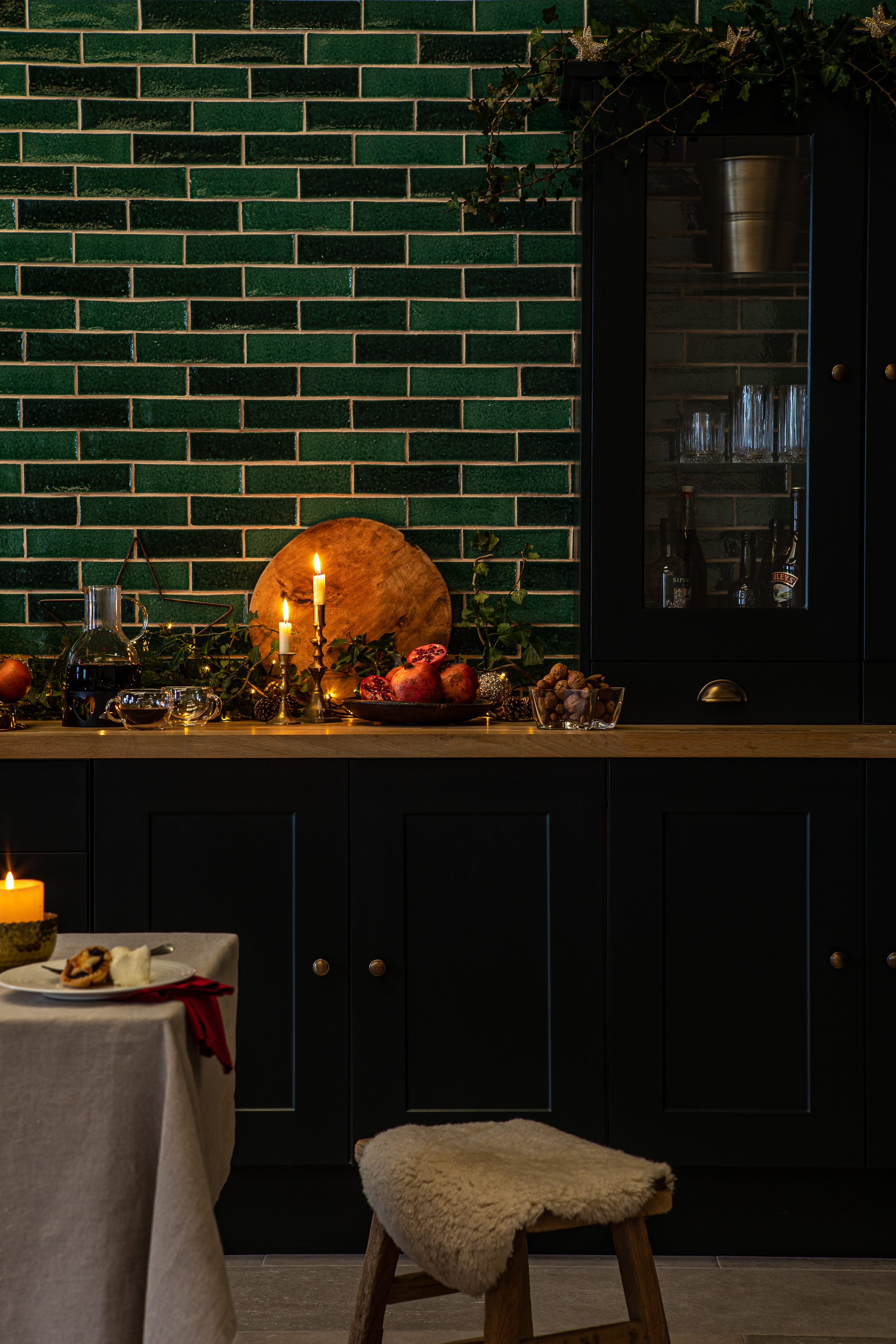
Nature is constantly evolving and changing. The seasonal cycles indicate change and a feeling of time moving forward as we navigate through them. Ideally, it’s important to spend as much time outside as possible to take in all of the seasonal changes around us, but we should also try to highlight those changes in our homes and workspaces too.
The kitchen is my absolute favorite room for adding seasonality. Shush, don’t tell the others. It’s so easy to do, though, and does not need to be costly or wasteful. I’m not throwing shade at the pumpkin mug in your mug cupboard that only comes out for one month of the year, but an actual pumpkin or gourd can look lovely as fall kitchen decor and seasonal in a decorative bowl while having the added bonus of being enjoyed in your soup bowl a couple of weeks later.
Edible, seasonal produce is a brilliant way of adding a fresh dash of color to your kitchen without adding to landfill. Pair with some planted seasonal bulbs in a fluted bowl for a cheerful hint of spring or a heavy-bottomed vase full of evergreen sprigs in the winter for a blast of some much-needed green along with a bowl of beets to help you beat the winter blues.
8. Grow your own
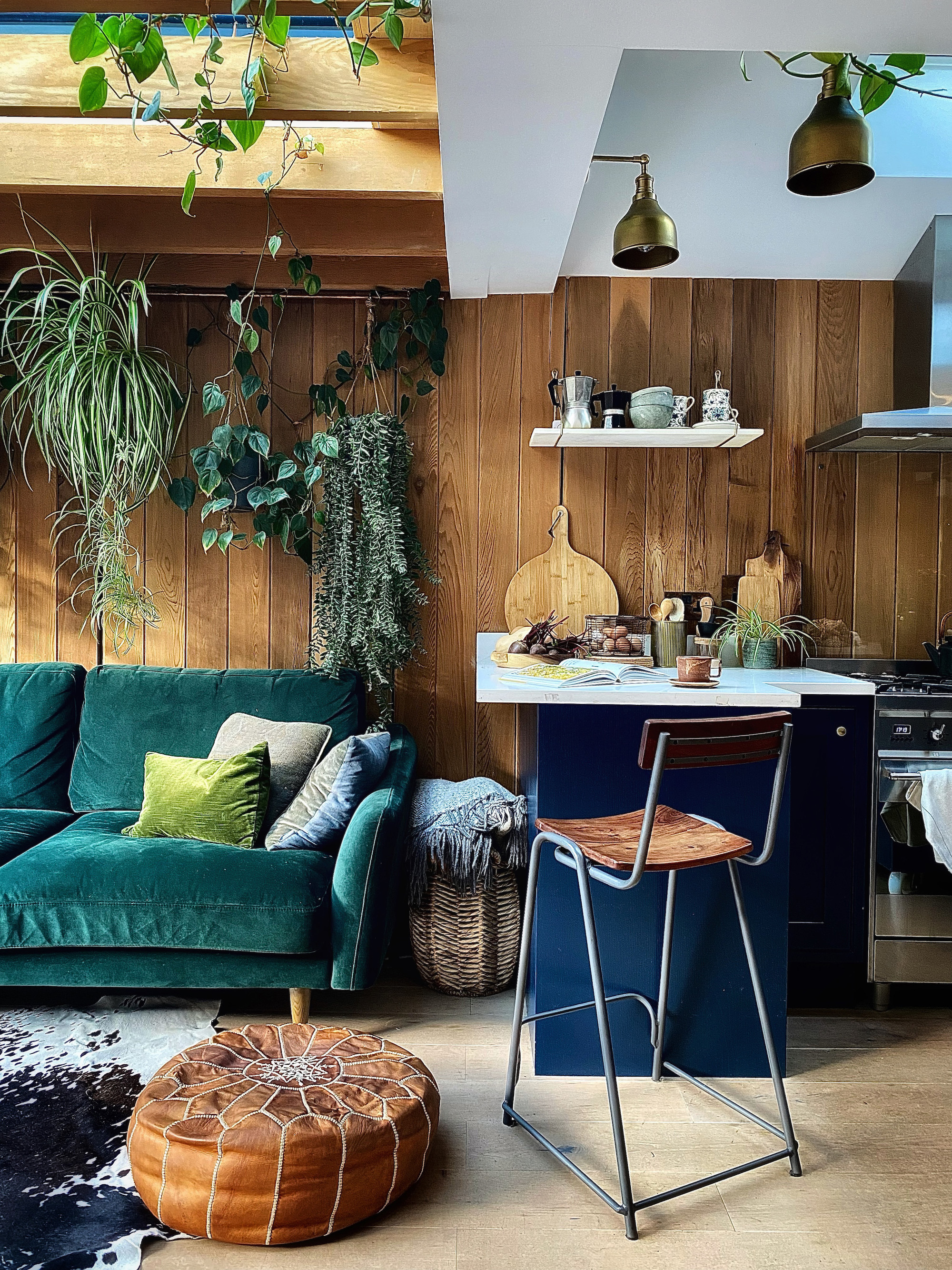
The term "harvesting high" informally describes the feeling of pleasure, satisfaction, and even mild euphoria that can accompany the act of harvesting food, whether it's from a garden or foraging in the wild. When we successfully find and gather food, the reward centers in our brain are activated, leading to a surge of dopamine associated with reward and pleasure, similar to what we experience when we receive recognition in the form of likes through social media. I wonder which high is likely to be more rewarding and enriching to our lives, though. I think we can all hazard a guess.
I get countless questions about plant care on a daily basis. The indoor and the outdoor variety. I’m told time and time again how people tried their hand at plant care once, inflicted their lack of care on said plant, the plant lost the will to live, and they lost the confidence to try again. The truth is, learning to care for plants is about the failures as much as the wins. If at first you don’t succeed, then try, try again. But don’t make the same mistakes twice, because that would be silly. I’m willing to bet that nine times out of ten it's too much care in the form of overwatering, rather than too little, but there are some nifty little gadgets out there that can help you on your journey to plant paradise, such as water monitors and self-watering pots. You can even get yourself well on your way to your own allotment journey with an indoor herb garden — they come with their own watering system and growing lamps so that you can enjoy homegrown herbs all year round. Herbs are as aromatic as they are edible, and with the addition of the growing lamps, they can add an element of fresh life to even the gloomiest corner of your kitchen.
9. Moments
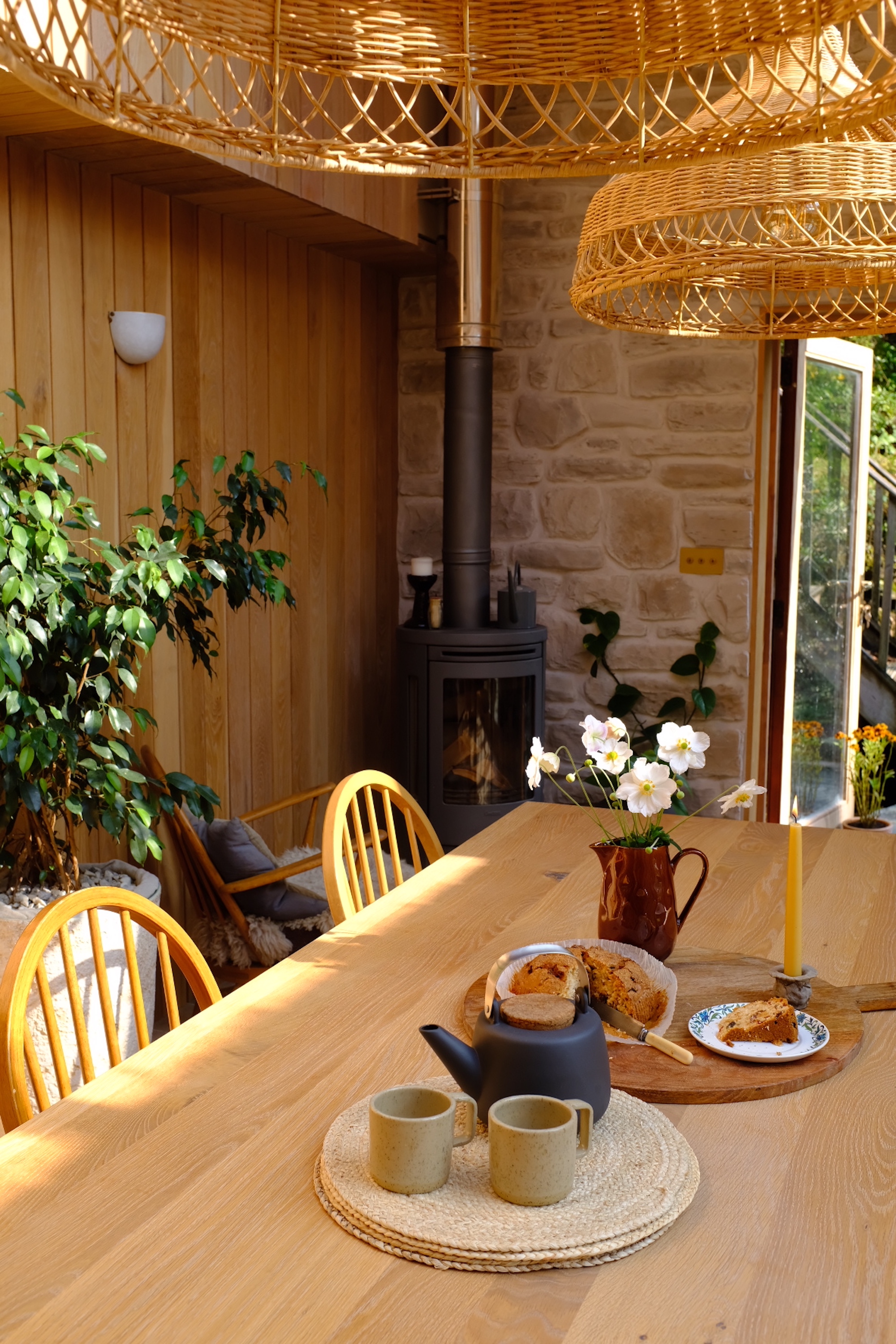
Creating personal moments around your home is incredibly important in biophilic kitchen design, as it deepens the connection between you, your space, and the natural world in a way that resonates uniquely with your individual experiences and memories. It moves beyond simply incorporating natural elements and fosters a more profound and meaningful relationship with your home to create a sanctuary that is unique to you and your family.
As a perfectionist, I hold both hands up to being guilty of trying to style out certain less aesthetically pleasing aspects in my home. For example, don’t expect to find a plug socket in my kitchen without moving at least four chopping boards out of the way first. But when it comes to displaying personal items around the home that may not be 100% in-keeping with the vibe of the room, I take a more relaxed approach. Children's art, a shell collected from the beach on a family holiday, or a jaunty little wooden stool that has been passed down through the family should be welcomed into your home with open arms. It’s what is going to give your home character and sou,l and a moment to stop and remember the fond memories around that object.
Now, I’m not for a second giving you the green light to fill up your fridge with a million magnets collected from every seaside town you ever stepped foot in, but a collection of framed postcards from your favourite places to visit or a ceramic pot that you lovingly made on a pottery course to hold all of your utensils in might be enough to make you smile while you potter around your kitchen doing mundane chores.
10. The Unexpected
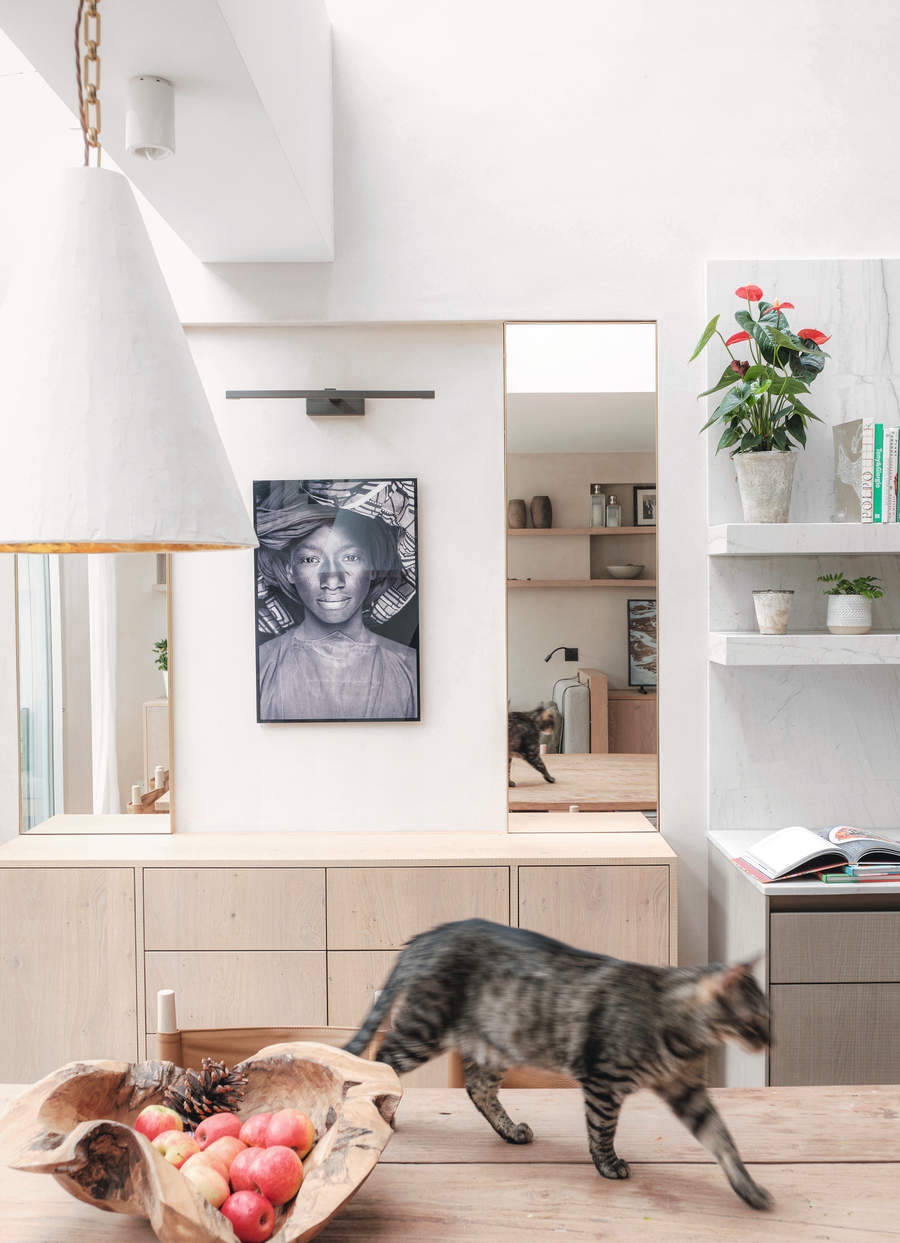
Adding an element of surprise to your kitchen design can inject personality, spark joy, and make the space feel more dynamic and engaging. Kitchens, by their very nature can be utilitarian spaces. They serve a very clear purpose, and so can sometimes fall into the trap of being predictable when it comes to the styling of that space.
What activities do we do in the kitchen? We cook. We make hot drinks. Does that mean that all kitchen-based art should be centred around these two things? Coffee-themed typography has no place in the kitchen, or any room for that matter. There, I said it. But you might want to display a vintage oil painting on your open shelving; maybe you are going to be brave and not use the bowl of fruit – too obvious – but the portrait of a man gazing out into the middle distance. It’s more unexpected and will help to elevate that area in the kitchen that currently houses all of the practical crockery that you use on a daily basis by adding an element of surprise.
You could add an unexpected flash of color or pattern, keeping the main color palette in your kitchen relatively neutral, and then introduce a vibrant, unexpected colour in an area like the inside of a pantry or through your use of tiles on the underside of an island countertop, or maybe even through a single statement appliance.
Embracing biophilic design within the kitchen transcends aesthetics by fostering a profound connection with the natural world in the very heart of our homes. By intentionally integrating elements like natural light, living greenery, organic materials, and sensory experiences, we transform the kitchen from a purely functional space into a revitalising sanctuary. This mindful approach not only enhances the beauty and tranquillity of our daily routines but also nurtures our well-being, reminding us of our inherent link to nature with every meal prepared and shared.

Marianna Popejoy is an interior designer specializing in biophilic design. She’s worked on numerous projects from outdoor bathrooms and garden layouts, to jungle-inspired interiors. Her work and home have been featured globally by Architectural Digest and Apartment Therapy and she is currently in the process of writing a book aimed at helping people make realistic, achievable changes to their homes by incorporating elements from nature.
